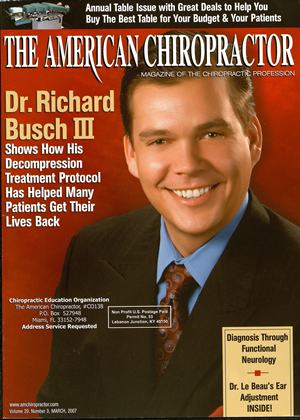the Test of Time I T SEEMS THAT EVERY MONTH OR SO, WE HEAR about a new magical anti-inflammatory supplement. Our best bet is to ignore the rhetoric and focus on the big three that have stood the test of time, those being ginger, turmeric and garlic. Garlic is, of course, the least appealing as it is...well, it's stinky stuff. And, after eating lots of garlic, you may even offend yourself, along with all of those unlucky enough to be in your immediate vicinity. For this very reason, I endeavor to use odor free garlic. In Rivlin's review on the history of garlic use, he explains that interest in the potential benefits of garlic has origins in antiquity and is one of the earliest documented examples of plants employed for treatment of disease and maintenance of health. Garlic was in use at the beginning of recorded history and has been found in Egyptian pyramids as well as ancient Greek temples. Hippocrates was known to have prescribed garlic for various conditions. Garlic was even given to the original Olympic athletes in Greece, perhaps one of the earliest "performance enhancing" agents. Ancient medical texts from Rome, China and India all show prescribed medical applications for garlic. In many cultures, garlic has been administered to provide strength and increase the work capacity of laborers. Of considerable interest is that, when considering all the cultures that were developing completely independent of one another, each came to similar conclusions regarding the efficacy of garlic. Modern science is tending to confirm many of the beliefs of the ancient cultures regarding garlic, defining mechanisms of action and exploring garlic's potential for disease prevention and treatment.1 In recent years, the Journal of Nutrition has devoted two editions to research updates on garlic (March 2001 and March 2006). Each issue contains multiple articles that discuss the various anti-inflammatory and health-promoting functions of garlic. The following papers are examples of some of the garlic research that is being conducted. Khalid Rahman K, Lowe GM. Garlic and Cardiovascular Disease: A Critical Review. J Nutr. 2006; 136:736S-740S Budoff MM. Aged Garlic Extract Retards Progression of Cor onary Artery Calcification. J Nutr. 2006; 136:741S-744S Yeh YY, Ye S. Homocysteine-Lowering Action Is Another Potential Cardiovascular Protective Factor of Aged Garlic Extract. J Nutr. 2006 136:745S-749S Weiss N et al. Aged Garlic Extract Improves Homocysteine-Induced Endothelial Dysfunction in Macro- and Microcirculation. J Nutr. 2006; 136:750S-754S Singh DK, Porter TD. Inhibition of Ste- rol 4-Methyl Oxidase Is the Principal Mechanism by which Garlic Decreases Cholesterol Synthesis. J Nutr. 2006; 136:759S-764S Lau BH. Suppression of LDL Oxida tion by Garlic Compounds Is a Possible Mechanism of Cardiovascular Health Benefit. J Nutr. 2006 136: 765S-768S Thomson M et al. Including Garlic in the Diet May Help Lower Blood Glu cose, Cholesterol, and Triglycerides. J Nutr. 2006; 136:800S-802S Borek C. Garlic Reduces Dementia and Heart-Disease Risk. J Nutr. 2006 136: 810S-812S Ross SA. Ally 1 Sulfur Compounds from Garlic Modulate Aberrant Crypt Formation. J Nutr. 2006; 136:852S- 854S El-Bayoumy K, ct al. Cancer Che- moprevention by Garlic and Garlic- Containing Sulfur and Selenium Com pounds. J Nulr. 2006; 136:864S-869S Research into these various areas looks promising, and it appears reasonable to consider supplementing our diet with garlic. Recently, the polymeal diet was proposed and is estimated to reduce the expression of cardiovascular disease by about 75 percent. The suggested foods include omega-3 animal products, such as fish, fruits, vegetables, raw nuts, red wine, dark chocolate, and garlic.2 While this short article is focusing on garlic, numerous other spices offer anti-inflammatory benefits, such as ginger, turmeric, red chilli, coriander, fennel, anise, cloves, basil and rosemary.' It seems that most spices have anti-inflammatory characteristics, however not all are available as supplements. Garlic has been a popular supplement for many years. 1 would suggest that we utilize garlic instead of the many new products that are touted in flashing ads as miracle cures. Kuhn suggests that we utilize products that deliver at least 5,000 micro-grams of allicin daily, which is the active ingredient found within garlic.4 Always keep in mind that garlic and other anti-inflammatory herbs should be used with caution in patients taking blood thinners, such as coumadin and perhaps, with anti-inflammatory medications as well. Dr. Seaman is the Clinical Chiropractic Consultant for Anabolic Laboratories, one of the first supplement manufacturers to service the chiropractic profession. He is on the postgraduate faculties of several chiropractic colleges, providing nutrition seminars that focus on the needs of the chiropractic patient. He is also a faculty member tit Palmer College of Chiropractic Florida, where he teaches nutrition and suhlu.xation theories. He can he reached hv e-mail at docseaman(winac.coin. References 1. Rivlin RS. Historical perspective on the use of garlic. ./ Nittr. 2001: 131:951S- 54S Franco OH. Bonncux L, dc Lact C, Peelers A. Steycrberg EW, Machenbach JP. The polymcal: a more natural, safer, and prob ably tastier (than the polypill) strategy to reduce cardiovascular disease by more than 75%. Brit MedJ. 2004; 329:1447-50 Aggarwal BB, Shishodia S. Suppression of the Nuclear Factor-kappa B Activation Pathway by Spice-Derived Phytochcmi- cals: Reasoning for Seasoning. Ann N Y AcadSci. 2004; 1030:434-41 Kuhn MA, Winston D. Herbal therapy & supplements: A scientific & traditional approach. Philadelphia: Lippincott; 2000; p. 142-48.|
 View Full Issue
View Full Issue






